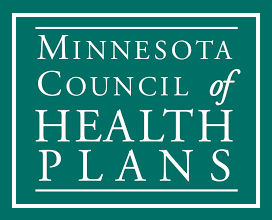Keeping Minnesotans Covered as Renewals Return for Medicaid and MinnesotaCare
With the March 31 sunset of the federal continuous coverage mandate, 1.5M Minnesotans will need to go through an eligibility review to maintain coverage in the state’s public programs
During the federal public health emergency, special rules meant Minnesotans covered by state programs, Medical Assistance (Minnesota’s Medicaid program) and MinnesotaCare, didn’t need to submit eligibility on a yearly basis. This was a good thing throughout the pandemic because it kept people connected to needed care. It also led to a record number of enrollees – Minnesota Health Care Programs reached an all-time high enrollment of over 1.5 million people, a nearly 30% increase. Now, recent federal actions will require states to begin unwinding some of those temporary policies starting next month. The state will have a one-year timeframe to review the eligibility of each of those Minnesotans enrolled in state programs—a process called ‘Redetermination’. Restarting renewals for the record number of enrollees in Minnesota’s Health Care Programs after a three-year hiatus will be an unprecedented amount of work for the state, counties and tribes who process the renewals, as well as for the health plans who support these enrollees to maintain coverage.
Recent media coverage, “One of four Minnesotans will have to requalify for Medicaid this year” and “A Daunting Challenge for Health Care” framed up the task ahead of us. While the state will undergo a gradual return to program operations that were in place prior to the pandemic, resuming normal operations will be far from simple. State estimates indicate as many as 15-25% of enrollees could move off state programs during this process. While some of those may no longer meet eligibility criteria, nearly half will lose coverage for procedural reasons, like incomplete or missing paperwork. Gaps in coverage lead to gaps in care and it will be critical to ensure Minnesotans have the support they need to keep their coverage or transition to new coverage.
Partnering to Support Minnesotans
To support Minnesotans during this process, a public-private partnership among state, tribal, county and health plan leaders has been underway for nearly two years with the shared goal of keeping people connected to health insurance coverage.
This partnership is implementing innovative approaches to support a smooth transition, including using new methods to contact enrollees, working with community media partners to raise awareness, and building on the relationship between enrollees and their health plans to provide timely information on what to expect. We are also advocating at the Capitol to expedite important legislation to support the unwinding work. The Legislature is considering several key proposals which would make a difference: Establishing continuous coverage for children to help reduce churn and ensure children have consistent access to health care; funding to expand Navigator organizations to increase the amount of help available to Minnesotans for eligibility and enrollment support; upgrading IT systems to improve the enrollee experience and facilitate processing. Finally, for those no longer eligible, Minnesotans shopping for coverage in the individual market will benefit from enhanced federal premium subsidies and last year’s bipartisan legislation that continued the state’s reinsurance program and reduces premiums an average of 20%.
Inequities will persist during the renewal period unless we take action
We also know that not all Minnesotans will be impacted the same during the unwinding period. Black, Indigenous and communities of color are overrepresented in Medical Assistance and the numbers are even greater for children. For example, while 4 in 10 children in Minnesota are on Medicaid, 64% of Black Minnesotan children are covered by state health care programs. That is why, together with the state, counties, tribal agencies and community partners, we are adopting a dedicated equity strategy to make sure Minnesotans most at risk for losing coverage have access to the necessary information and resources to maintain coverage. One specific tactic was developed as part of Minnesota’s COVID-19 vaccine equity strategy, prioritizing outreach to members living in areas with the most barriers to renewing their coverage. By applying the Center for Disease and Control’s (CDC) Social Vulnerability Index (SVI), which takes into account things like housing, transportation, income, race and ethnicity, language and other social factors to identify ZIP codes for those most at risk, we can look at which communities should be targeted for extra support and pair them with the right resources to keep them covered. This support will include partnering with local media outlets, community leaders and other cultural institutions to disseminate information; providing translated materials in multiple languages and accessible formats; following up with those who don’t have a regular address; and making sure Minnesotans get all their questions answered.
What you can do right now
We know that many Minnesotans experienced big changes during the COVID-19 pandemic like moving to a new address, getting married, growing their families, or getting a new job. There are many changes that could impact a person’s eligibility, however, the most critical piece of information that Medical Assistance enrollees can provide to their county is updated contact information, and m
ost importantly, their current address. Over the coming months, the state and counties will be sending important information the mailing addresses of enrollees. To make sure you receive these messages, go to mn.gov/dhs/mycontactinfo to learn more and to find the contact information for your county. To learn more about the upcoming redetermination period and find key dates, visit mn.gov/dhs/renewmycoverage.

Be prepared to renew. Report address and phone number changes to make sure you receive renewal information when the time comes.
For more information on this issue and to learn more about how the Council and member plans are working to support Minnesotans during this process, check out our Fact Sheet.

